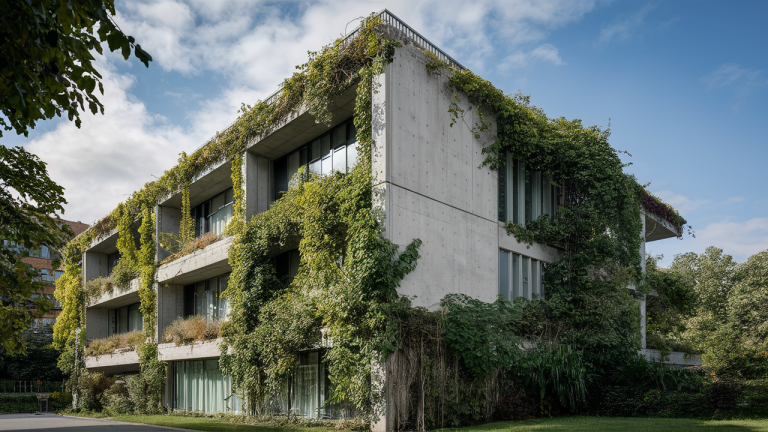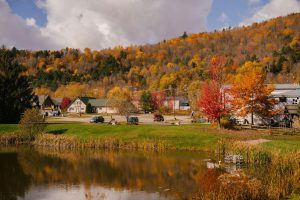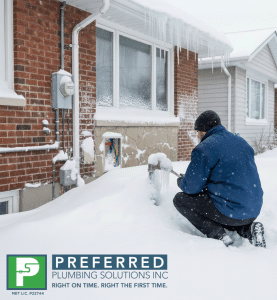Have you seen those bold concrete buildings with plants growing all over them? I’ve always been fascinated by how these stark structures can look so alive. That’s eco brutalism – where raw concrete meets living greenery.
In this article, I’ll answer all your questions about this growing trend. You’ll learn:
- What makes a building truly “eco brutalist”
- Where the style came from and why it matters now
- How do these buildings help the environment
- Why some people love it (and others don’t)
If you’re confused about this style or wondering if it’s just another passing trend, I’ll clear that up. The truth is, eco brutalism isn’t just about looks, it’s a response to real problems like climate change and city heat.
By the end of this post, you’ll understand why this seemingly odd mix might be exactly what our cities need right now.
What Is Eco Brutalism?
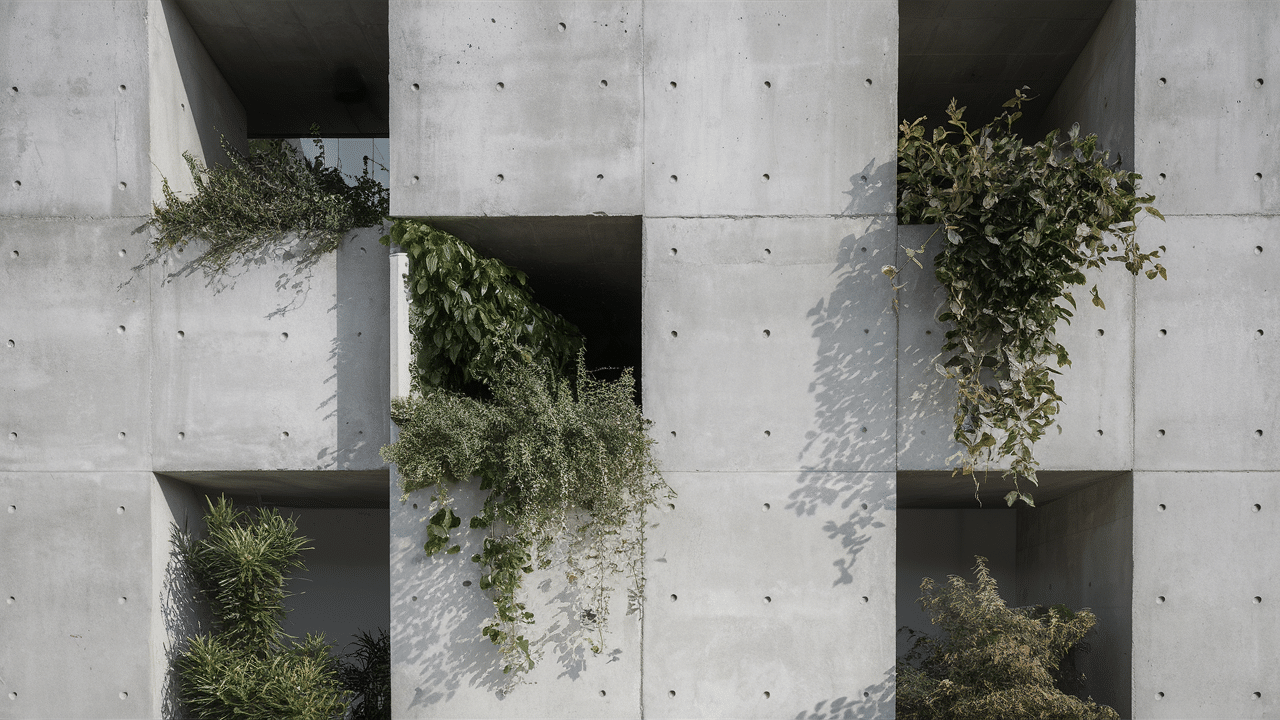
Eco-brutalism combines two seemingly opposite elements: raw concrete architecture and natural elements. It takes the bold shapes of brutalist design and adds plants and green features. I see it as a marriage between the tough look of exposed concrete and the soft touch of nature.
The style retains brutalist values – showcasing materials as they are and creating strong shapes – but softens them with the addition of greenery.
Where It All Started
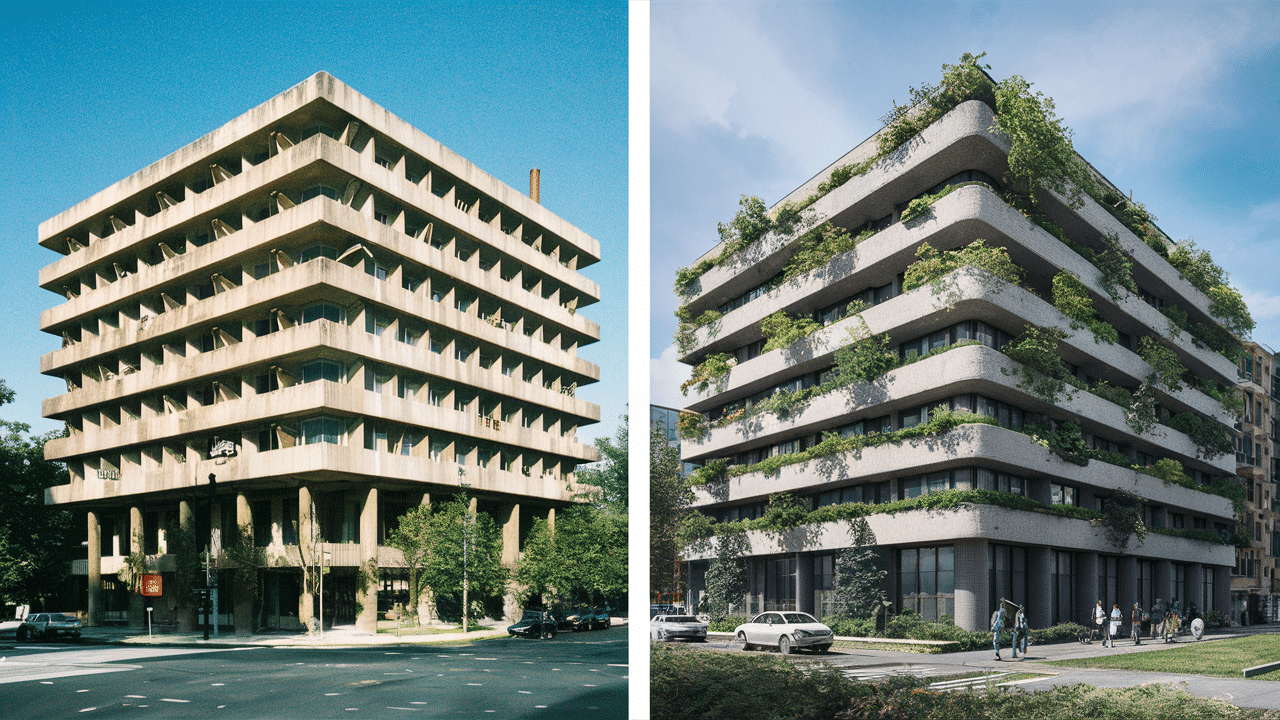
Eco brutalism has roots in classic brutalism from the 1950s to the 1970s. The original style, derived from the French term “béton brut,” meaning “raw concrete,” emphasized honesty in materials and bold forms.
I find it interesting that this new version gained momentum in the 2010s. Designers began to see how the solid forms of Brutalism could work with, rather than against, nature. They started adding:
- Living walls
- Roof gardens
- Water-saving systems
- Natural cooling methods
This shift occurred as more people began to care about building in ways that benefit, rather than harm, the planet.
What Makes a Building ‘Eco Brutalist’?
I can spot an eco brutalist building by looking for these key features:
- Raw concrete forms – Bold shapes with visible concrete that don’t hide what it’s made of.
- Living elements – Plants growing up walls, across roofs, or inside the structure.
- Energy-smart design – Features that cut down on power use, like special glass and natural air flow.
- Water systems – Ways to collect rain or reuse water.
What stands out most is the contrast – the hard concrete juxtaposed with the soft plants. This mix gives these buildings their unique look.
Good Things About Eco Brutalism
I’ve found many benefits to this building style. These structures are strong and need less fixing over time. They often create small ecosystems for birds, bees, and other creatures.
The thick concrete walls keep heat in winter and cool in summer. The bold contrast between concrete and plants creates a distinctive look. Once established, these buildings typically require less maintenance than traditional ones.
I especially like how these buildings age. Unlike some modern glass towers that appear shabby after a few years, eco-brutalist structures often retain their aesthetic appeal as they age. The plants grow more fully over time, enhancing the building’s appearance rather than detracting from it.
Real-Life Examples of Eco Brutalism
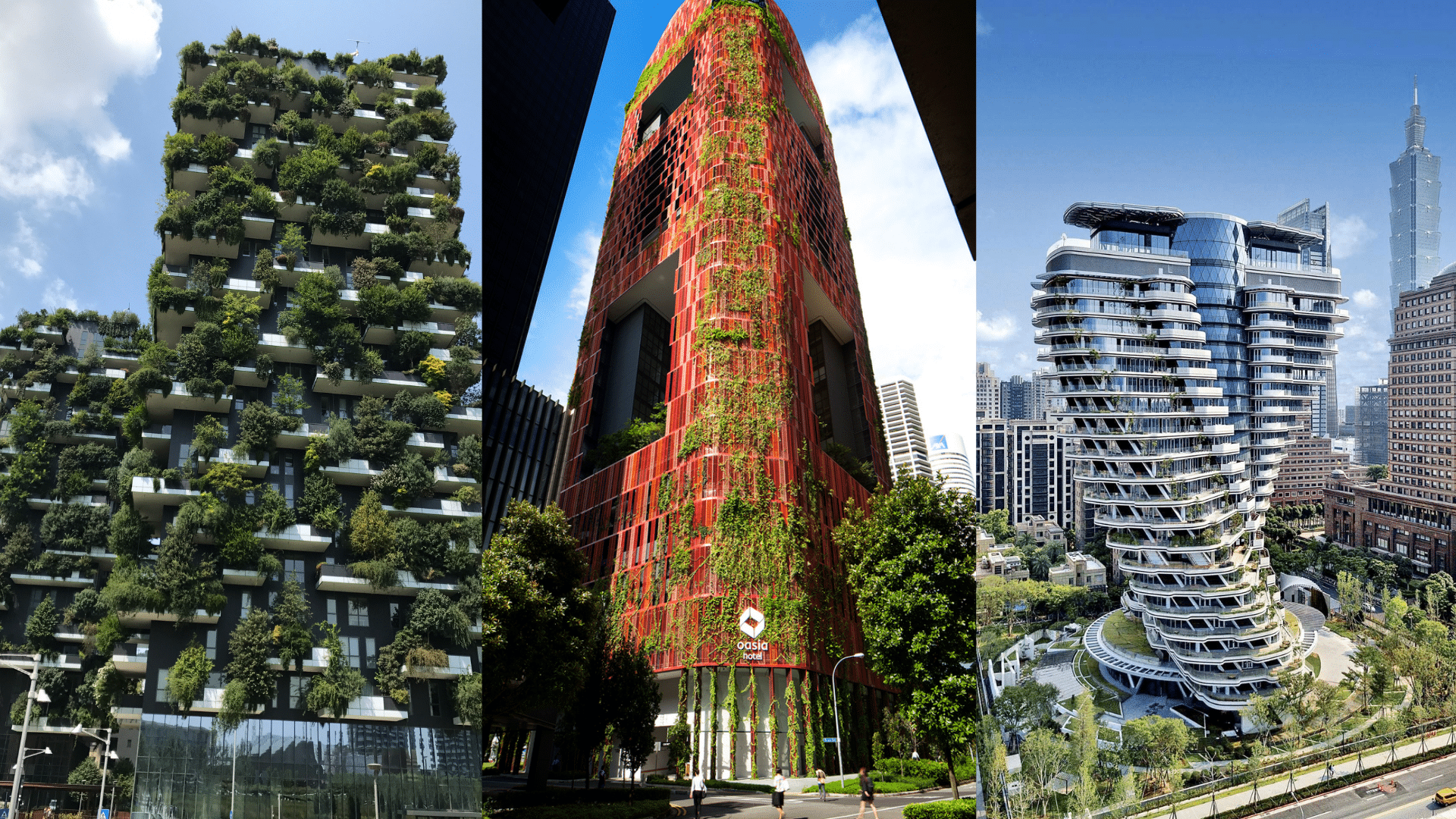
Let me share some buildings that show eco brutalism at its best:
- Bosco Verticale (Milan): Twin towers with hundreds of trees on balconies, creating a forest in the sky.
- WOHA’s Oasia Hotel (Singapore): A red mesh-covered tower with 21 plant species climbing its sides.
- Tao Zhu Yin Yuan (Taipei): A twisted building with trees on every floor that absorbs carbon.
Each example takes the basic idea but adapts it to its location. That’s what makes this style so interesting.
How Eco Brutalism Helps the Planet
I’m most excited about the real benefits these buildings bring:
- They clean the air by using plants that filter pollutants
- They cut down on heat islands in cities by adding greenery
- They reduce energy use through smart design
- They help with water runoff by soaking up rain
- They create homes for birds and insects in urban areas
What the Future Could Look Like
I see eco brutalism growing in exciting ways. Future trends might include:
- More mixing of materials: Adding wood and recycled metal to the concrete.
- Smart technology: Buildings that adjust based on weather, using less energy.
- Food growth: Using plant spaces to grow food for residents.
- Community focus: Creating spaces for people to connect with nature.
One building alone makes a small difference, but as more pop up across cities, the impact grows. Studies show that areas with eco-brutalist buildings can be several degrees cooler in summer than areas without green structures.
Eco Brutalism at Home and School
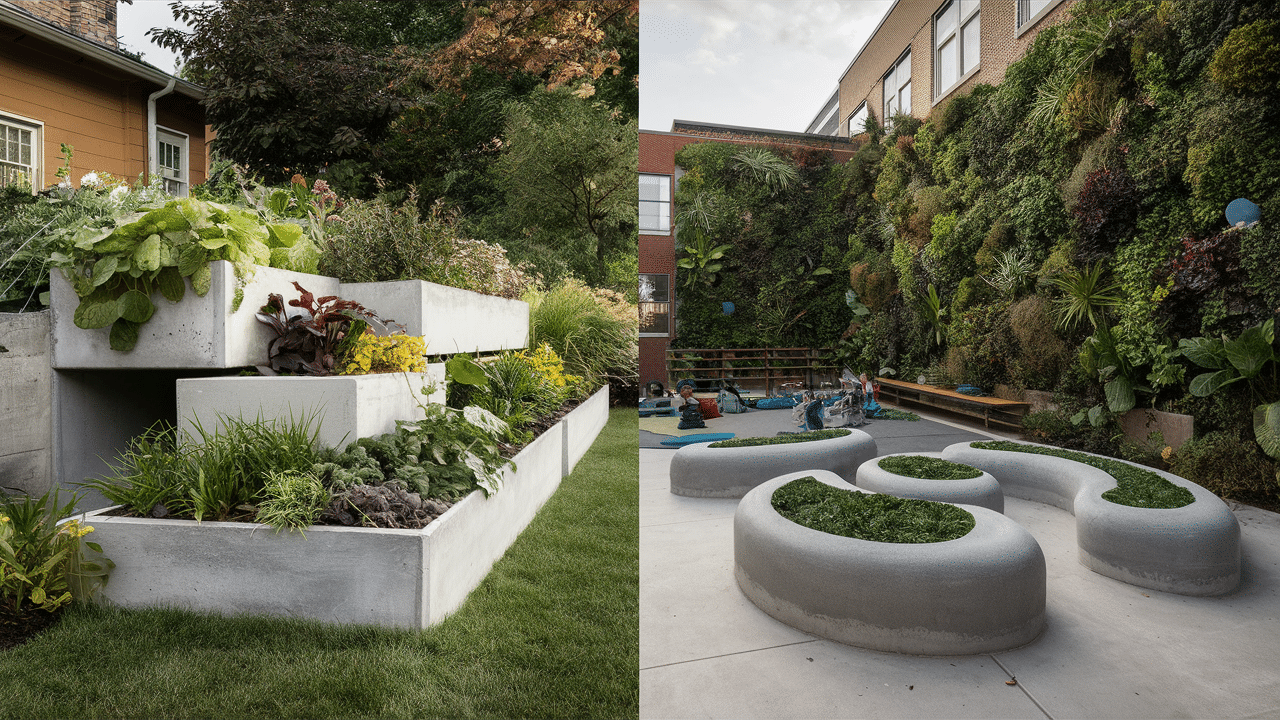
You don’t need a massive building project to bring eco brutalist ideas home:
For homes:
- Concrete planters with trailing plants
- Interior concrete walls with living moss sections
- Brutalist-inspired furniture with plant pockets
For schools:
- Concrete learning gardens
- Rain collection walls that double as play features
- Outdoor classrooms with green walls for better air quality
I’ve tried some small-scale projects myself and found they bring the same joy as the big buildings – that pleasing contrast between hard and soft, manufactured and natural.
Should You Care About It?
Even if you never live or work in an eco brutalist building, the ideas behind the style matter. They show us we can:
- Build strong structures that still welcome nature
- Make choices that look good AND help the planet
- Think about how buildings can do more than just house people
I believe the biggest lesson from eco brutalism is that we don’t have to choose between bold design and being kind to the earth. We can have both.
Conclusion
Eco-brutalism brings together two worlds that once seemed worlds apart: stark concrete and living plants. This mix creates buildings that do more than look interesting – they actively help our cities breathe.
I find hope in these structures. They show us we don’t need to choose between strong, lasting buildings and caring for our planet. We can have both.
As our cities become increasingly crowded and our climate changes, we need innovative solutions. Eco-brutalism offers one path forward, transforming cold concrete into living, breathing spaces.
Whether you’re an architecture enthusiast or simply someone who cares about improving cities, this style is worth watching. It reminds us that even the hardest materials can support life when used with care and thought.
Frequently Asked Questions
Why Is It Called “Brutalism” if it’s Eco-Friendly?
The “brutal” part comes from “béton brut” (raw concrete) in French, not from being harsh. It’s about showing materials honestly, not being mean to the environment.
How Much Does an Eco Brutalist Home Cost Compared to Regular Houses?
Initial costs run 15-30% higher than those of standard homes, but many owners see their utility bills drop by 40% or more, making up the difference within 8-10 years.
Can I Add Eco Brutalist Elements to My Existing Home?
Yes! Start with concrete planters, exposed concrete interior features, or a small green wall. These small touches bring the style’s benefits without a complete rebuild.
How Do These Buildings Handle Heavy Rain and Storms?
Most are designed with water management systems that capture rainfall for plant use. Their solid concrete cores also withstand extreme weather better than many lighter buildings.
Do Eco Brutalist Buildings Attract Bugs and Pests?
They attract beneficial insects, such as bees and butterflies, by design. For unwanted pests, most include natural deterrents and careful plant selection rather than chemicals.


